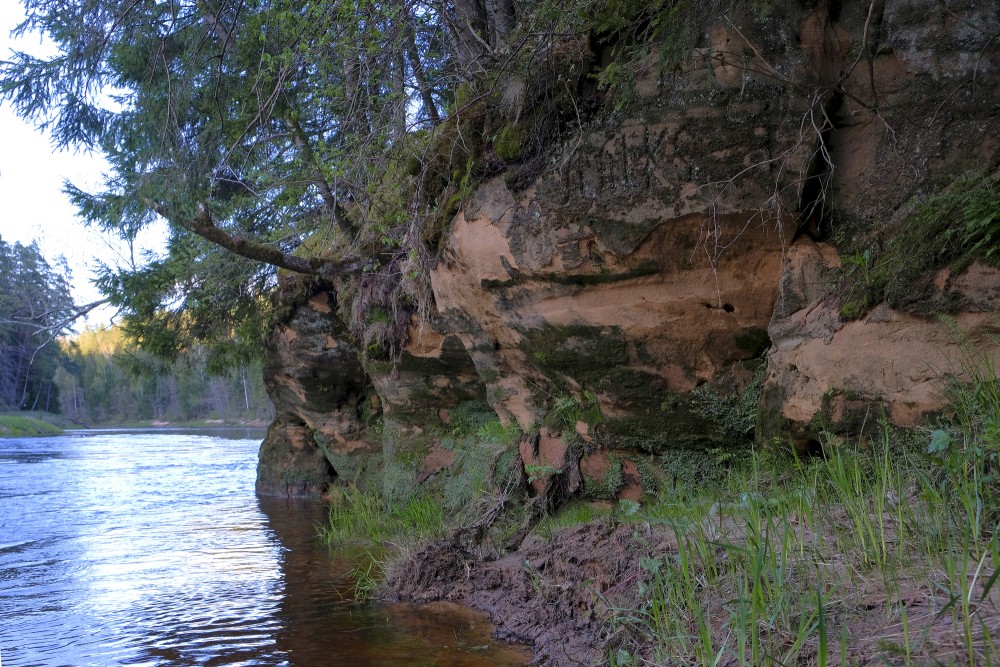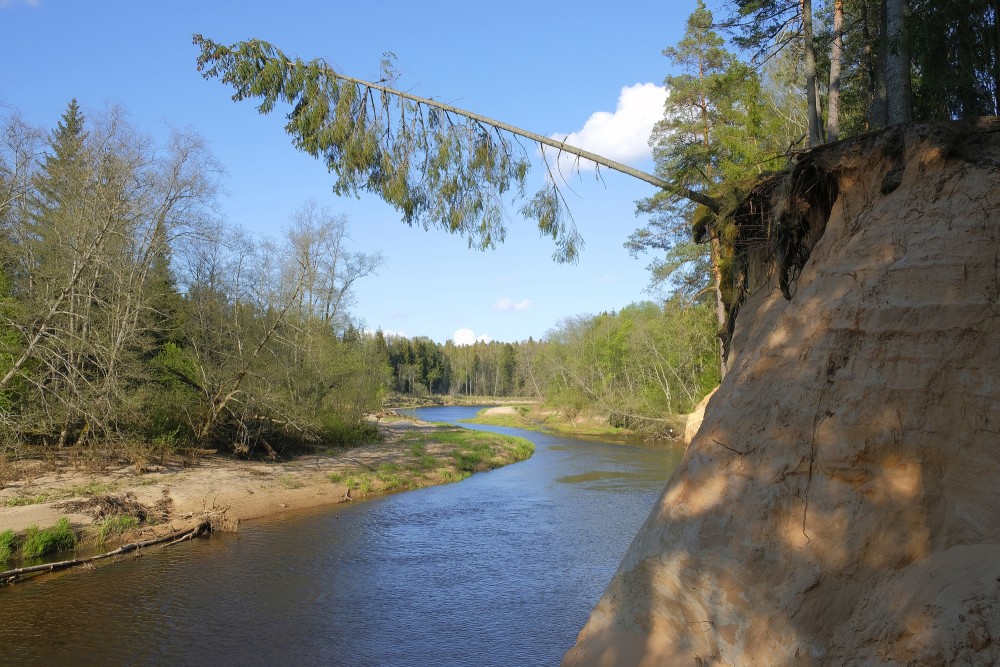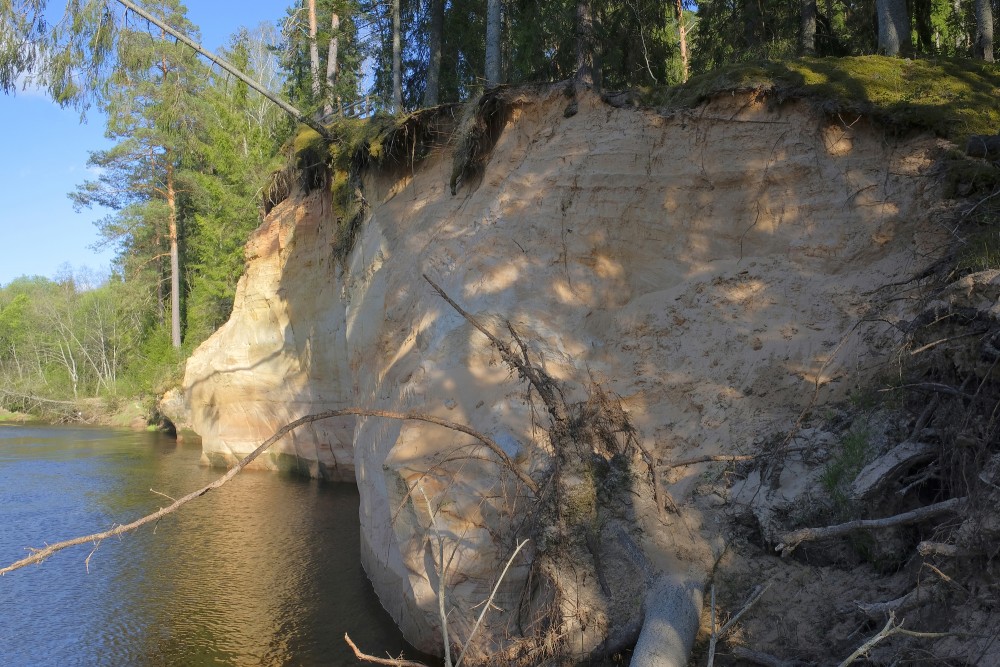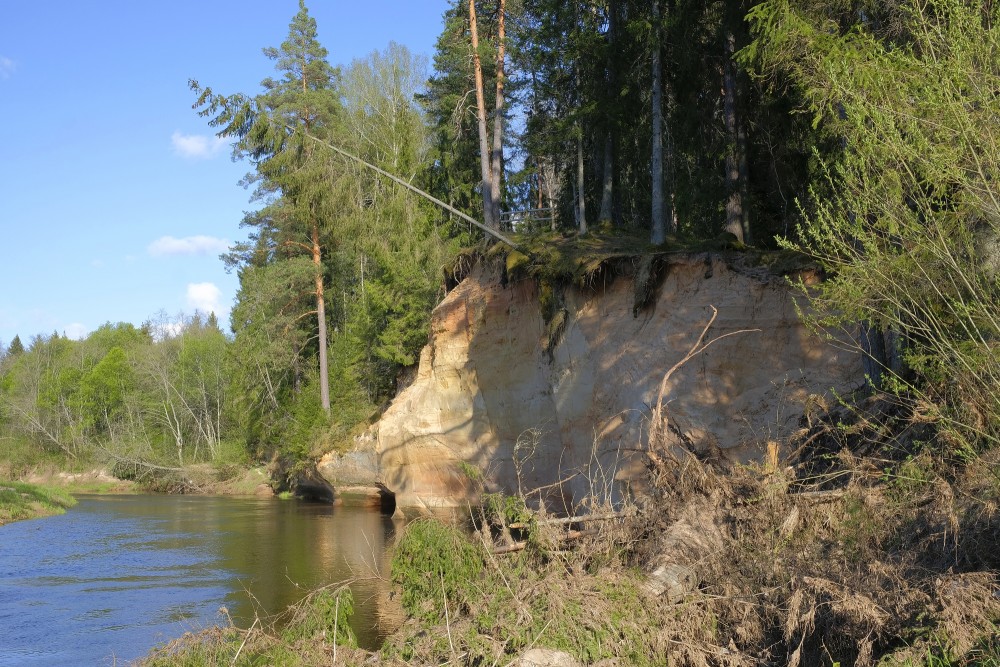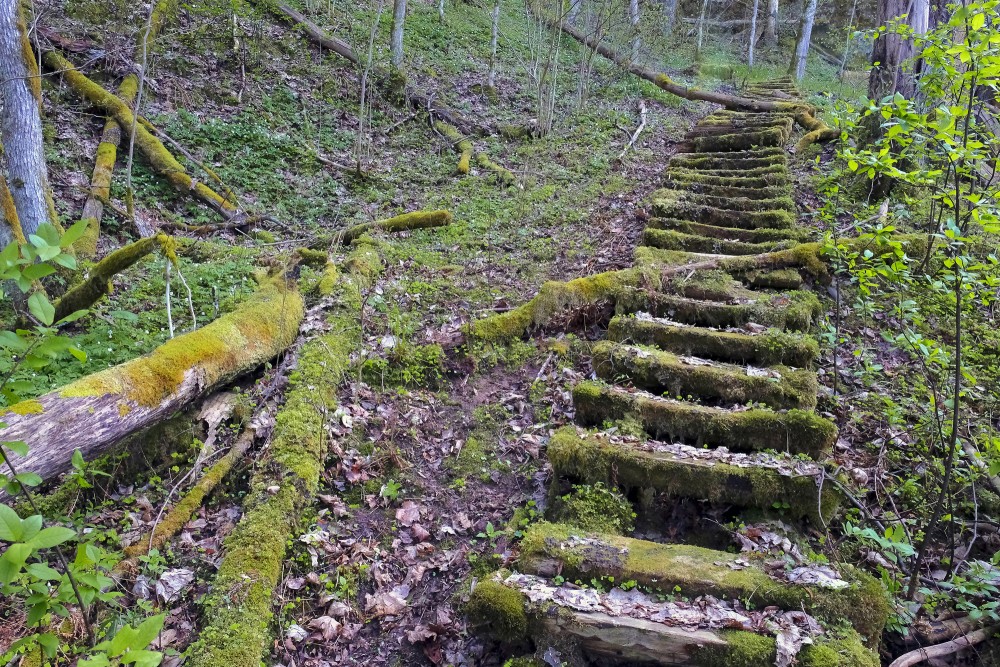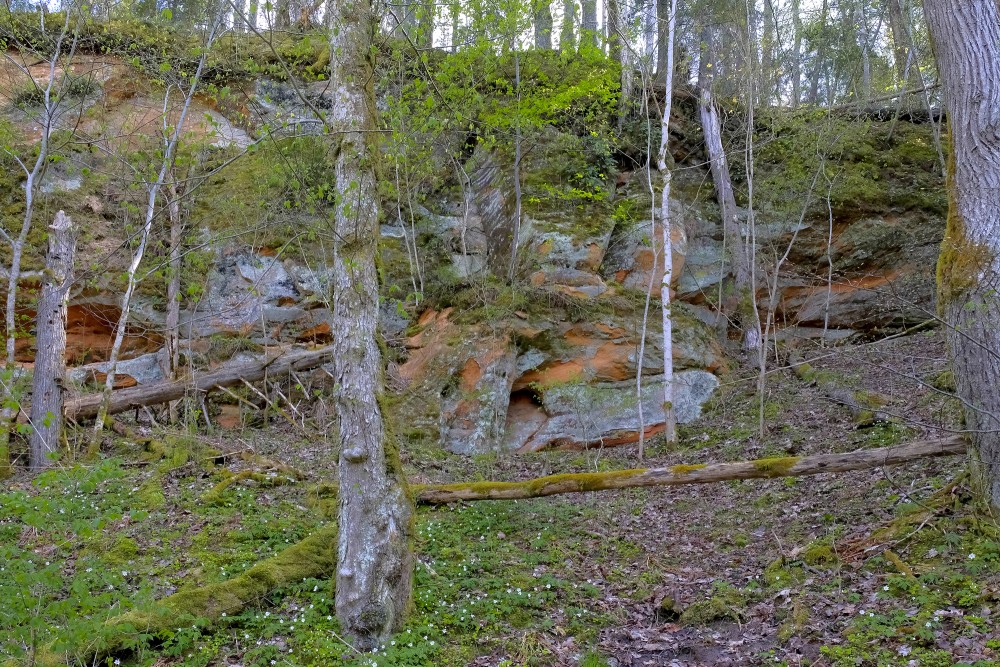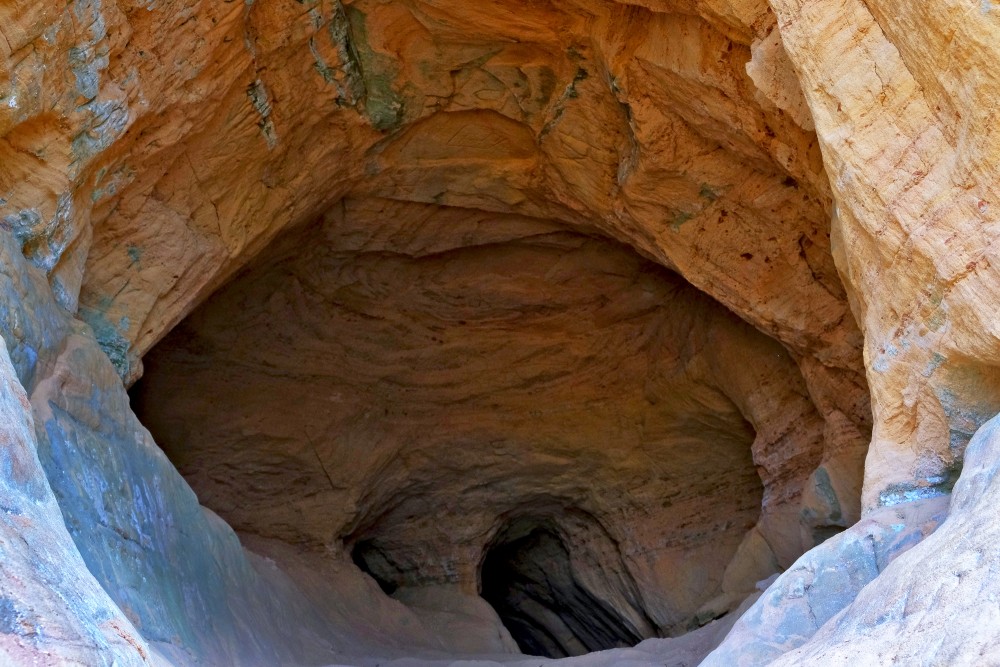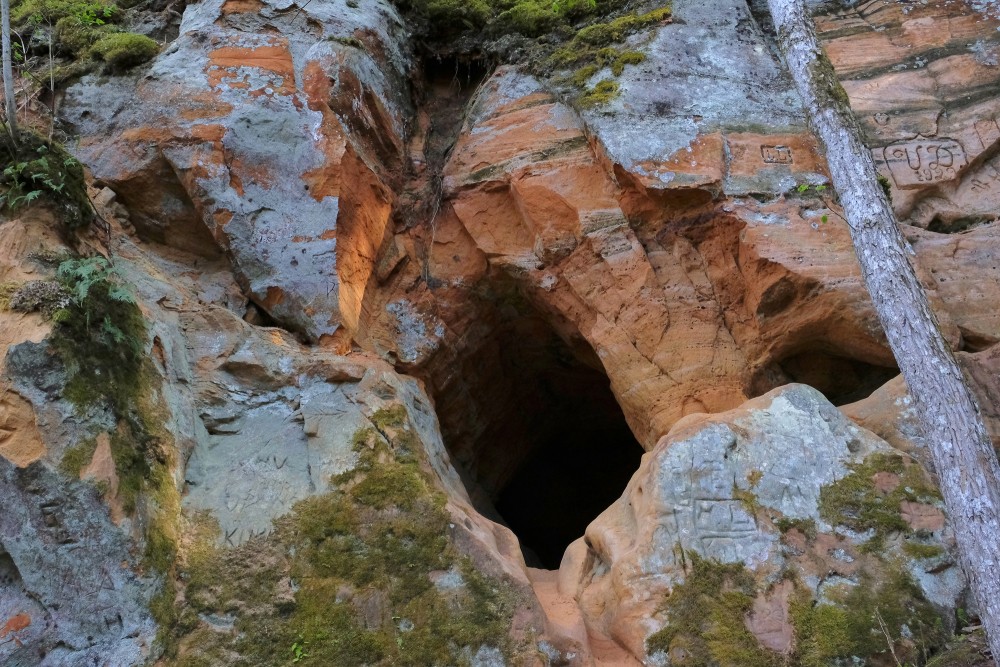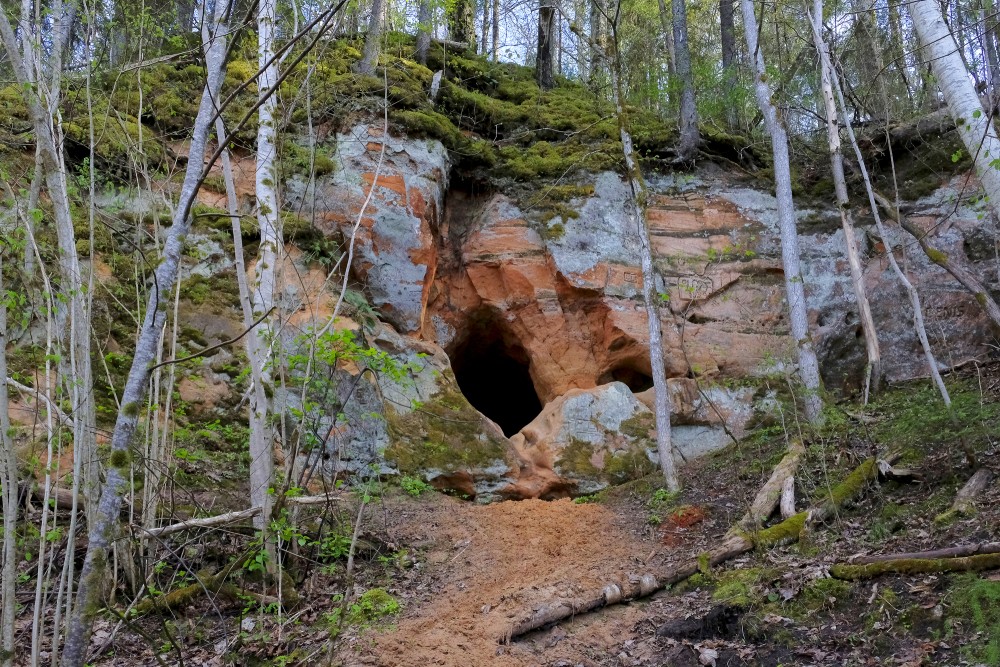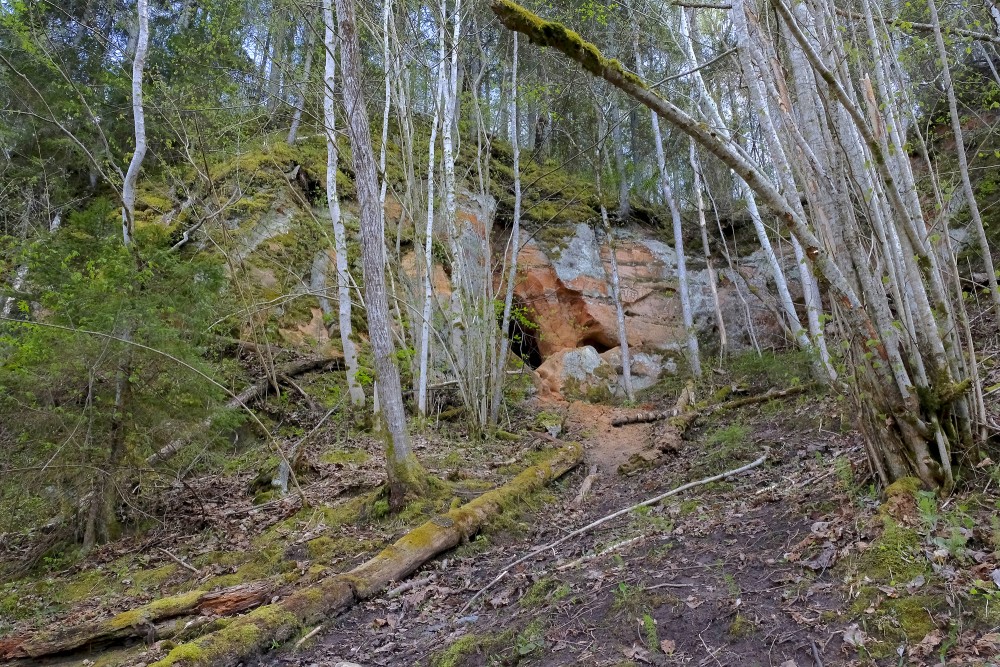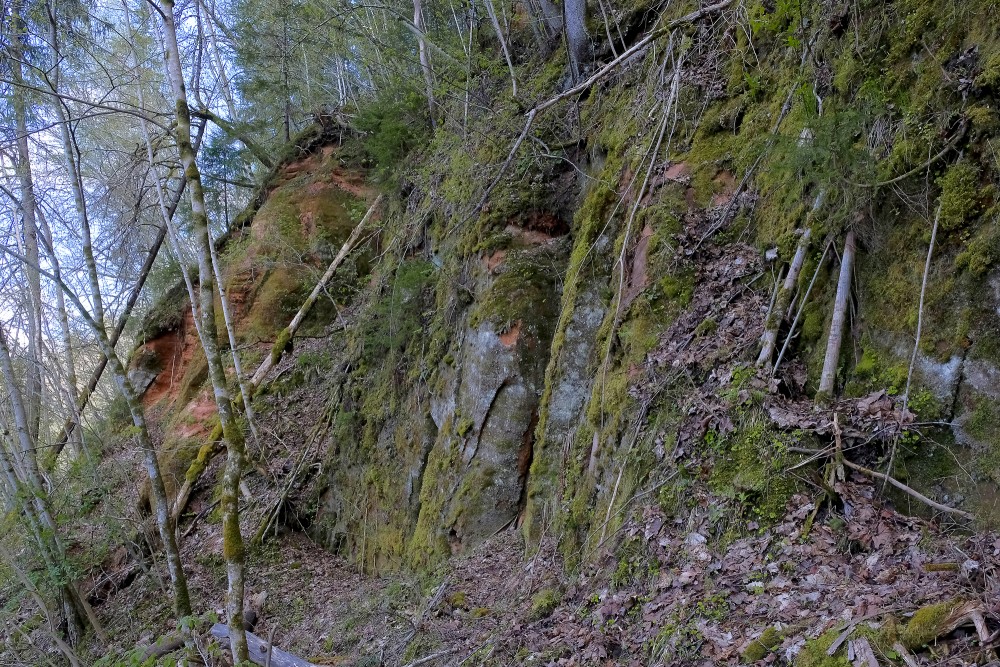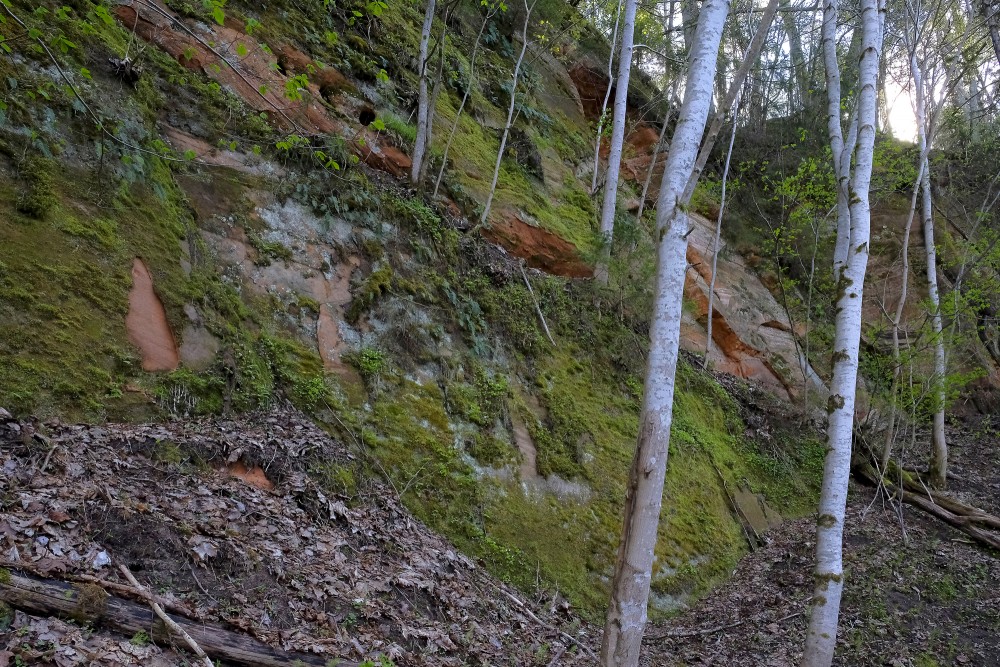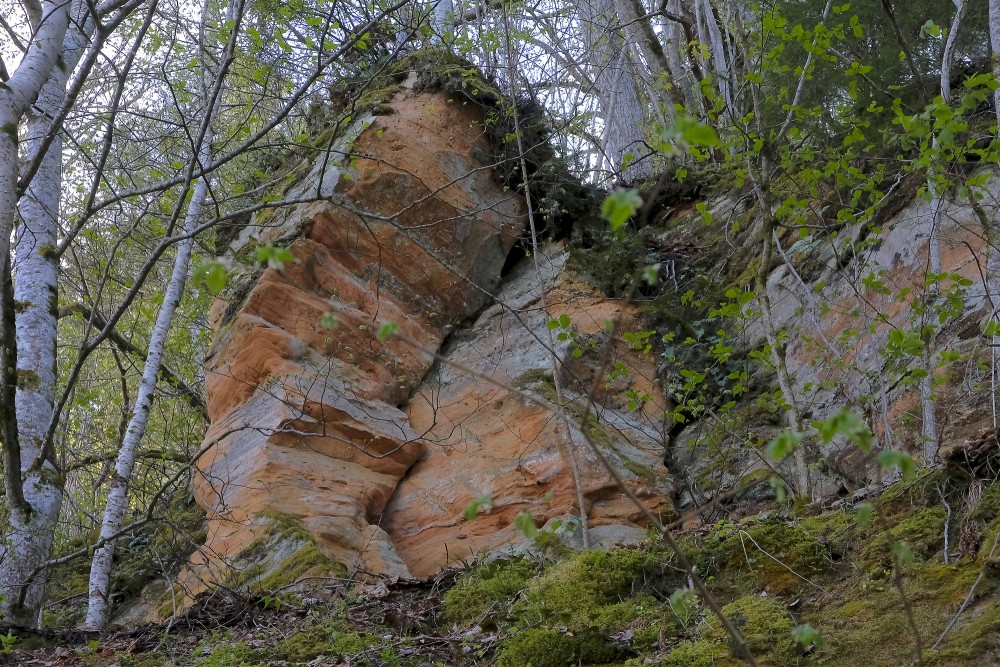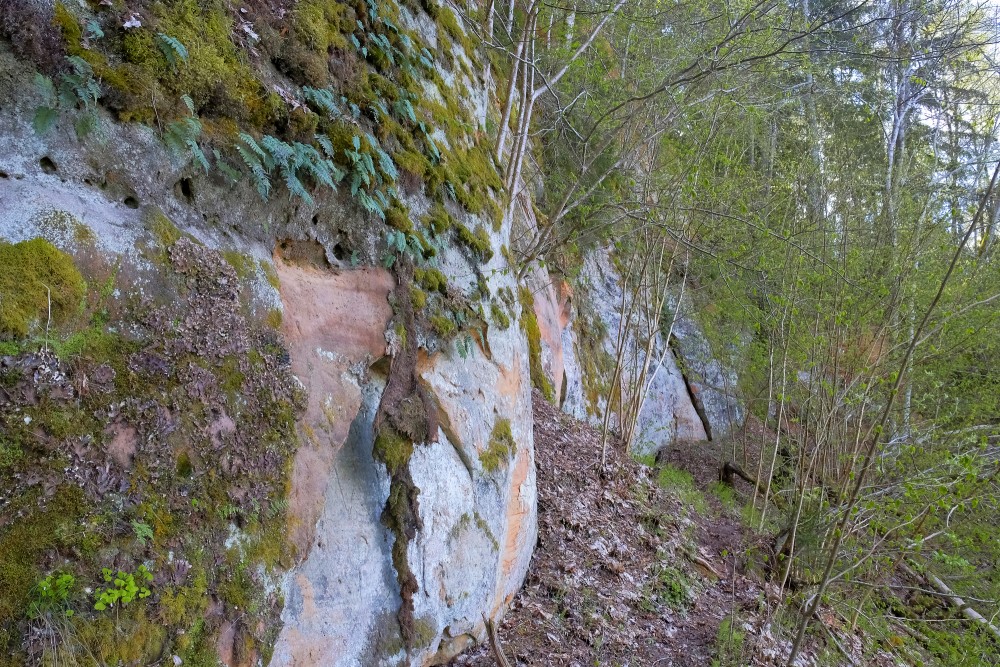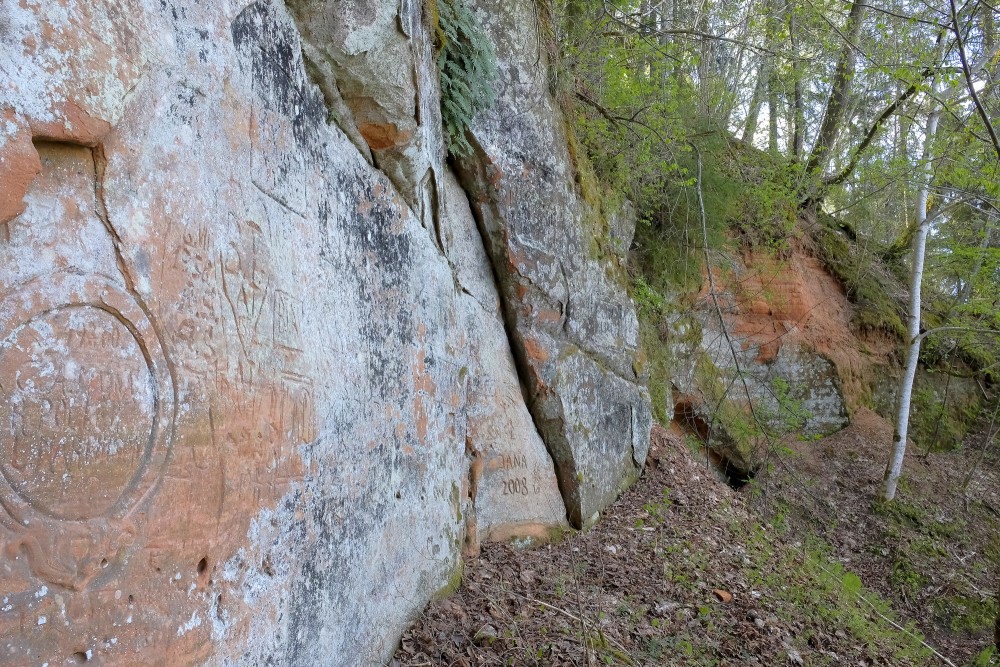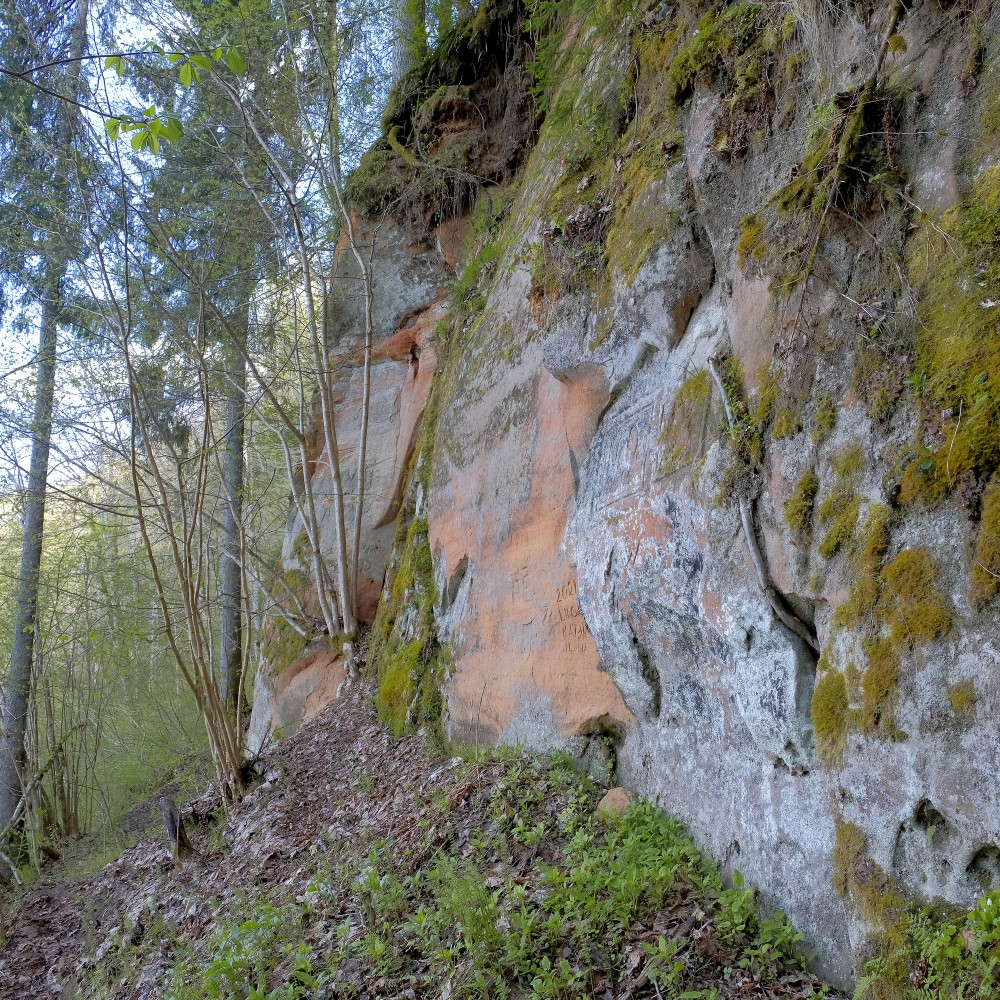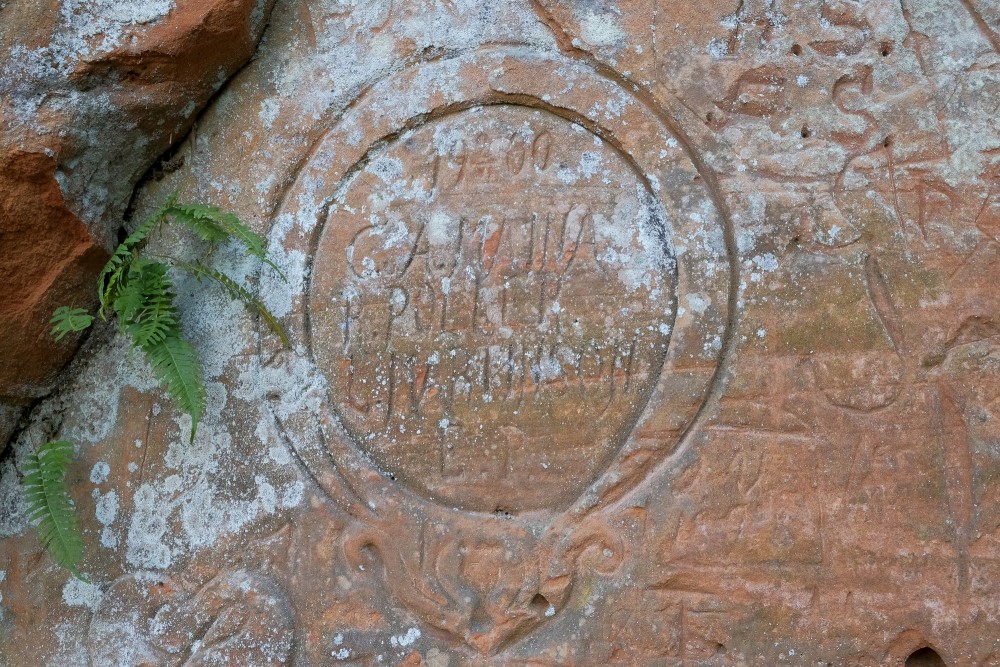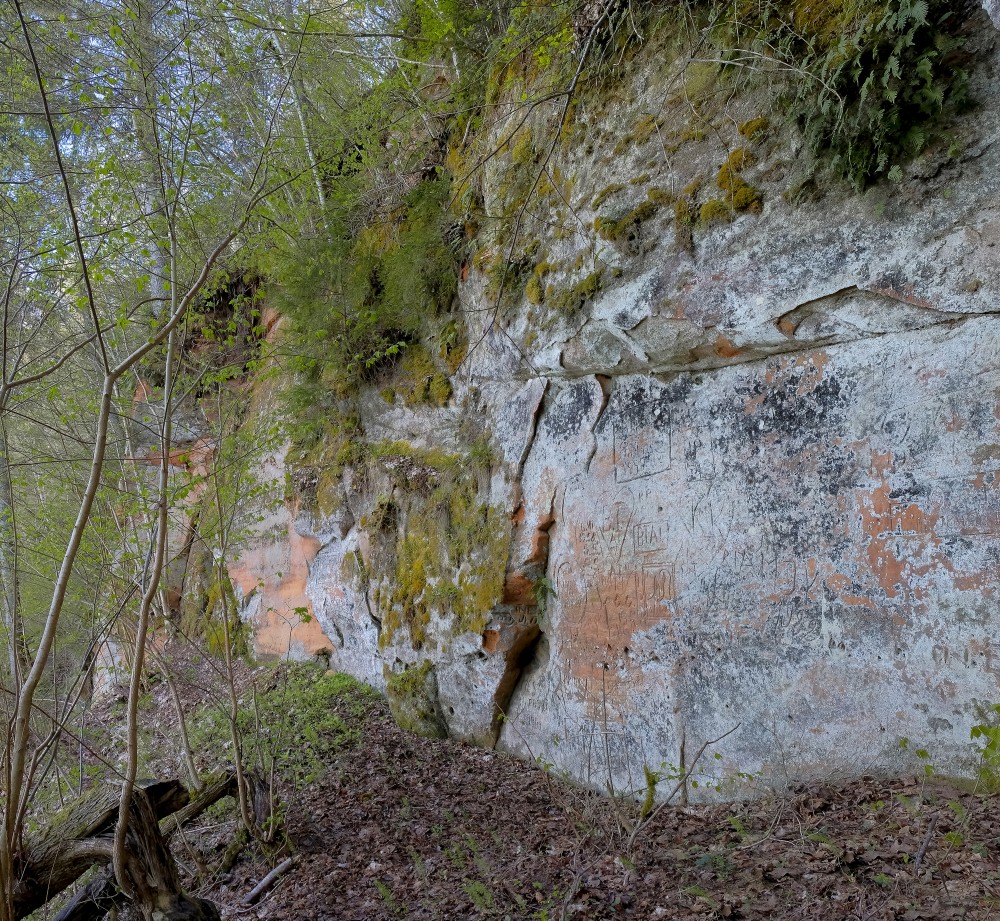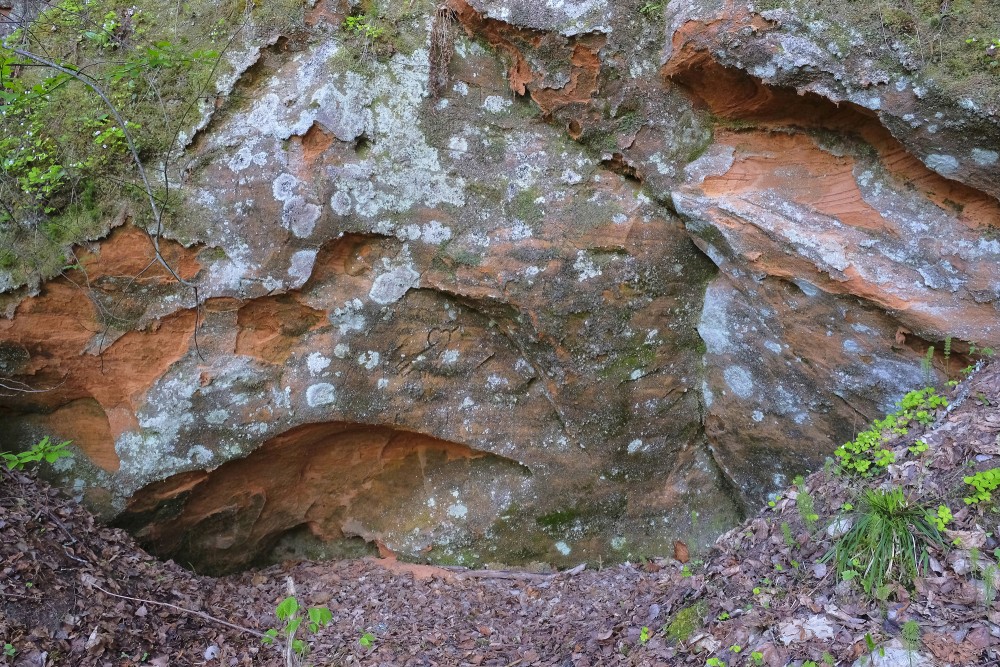Gauja National Park
The Gauja National Park (Latvian: Gaujas nacionālais parks) in Vidzeme is the largest national park in Latvia, with an area of 917.45 km² running from north-east of Sigulda to south-west of Cēsis along the valley of the Gauja River, from which the park takes its name.
It was established in order to protect slightly disturbed natural areas, promote nature tourism and ensure sustainable development in the area. National park is characterized by a high biological diversity, rock outcrops and varied terrain shapes, springs, picturesque landscapes and many historical and cultural monuments from different centuries. The major part of the national park and the dominant is the old valley of the Gauja River. The valley is protected and at the same time it can be used for nature and cultural history tourism, as well as healthy recreation.
The park administration is based in Sigulda.
Area
The area of the park is 91.745 ha and it is divided into five functional zones. Nature reserves take up a rather small but at the same time very valuable part of the park and visits are prohibited to these areas. In the rest of the territory is allowed only such economic activities, which do not substantially change the historically developed structure of the landscape.
Forests take up ~47 %, almost one half of the territory. There are almost 900 plant species, 149 bird and 48 mammal species found in the territory. Since 2004 Gauja NP is a part of Natura 2000 network as a territory, which is designed for conservation of protected species and biotopes.
Tourism history has a long tradition in the Gauja NP. The first visitors were hiking in the Sigulda area with walking-sticks as far back as in the 19th century. Every year thousands of visitors are attracted by the unique landscape, the largest Devonian rock outcrops – sandstone precipices, rocks and caves, as well as monuments of culture and history, which are twined with many legends and stories.
In the national park, there are over 500 monuments of history and culture – hillforts, stone castles, churches, manors, water and windmills, as well as other archeological, architectural and art monuments.
en.wikipedia.org
The Gauja National Park is the largest and oldest of the national parks in Latvia, characterized by great biological diversity, variety of landforms, natural springs, sandstone outcrops, picturesque views and unique natural, cultural and historical monuments.
The Gauja National Park was established in 1973. It stretches over more than 90,000 hectares, protecting the most beautiful section of the Gauja Valley along the Gauja River between Valmiera and Murjani.
One day will not be enough to enjoy in full all the charms of the national park!
Outcrops, cliffs and caves
Magnificent sandstone outcrops, rocks, cliffs and caves are among the park’s major attractions. The reddish, yellow and grayish sandstones were formed 350-370 million years ago.
There is a variety of caverns in the Gauja National Park – Gutmanala, the most spacious grotto in the Baltic states; Kalejala, which is the longest; the unique Liela Ellite; and also Velnala in Sigulda, one of the most popular caverns.
The Erglu Cliffs, the Kuku Cliffs, the Licu-Langu Cliffs and the Sietiniezis Ridge sit on the banks of the Gauja River, and one can find outstanding cliffs of sedimentary rock composed of sandstone and dolomite – the Zvartes Rock, the Dzilnas Ridge, the Kaubju Ridge, the Ainavu Scarp – on the banks of the Amata River. Reddish sandstone cliffs – the Lustuzis Ridge and the Anfabrika Cliffs – can be admired on the banks of the Ligatne River in Lejasligatne.
Cultural and historical monuments
There are over 500 cultural and historical monuments in the territory of the Gauja National Park – castle mounds, brick castles, churches, manor houses, watermills, windmills and other archaeological, architectural and art monuments.
Scattered along the Gauja River, there are 19 ancient castle mounds, six Medieval castles and three towns – Straupe, Sigulda un Cesis.
- Turaida Museum Reserve. Visit the Turaida Castle, the manor house, the church and the Dainu Hill and learn what had happened in the area since the 11th century. A breathtaking view of Gauja Valley opens from the tower of the castle.
- Araisi Lake Castle is a reconstructed site of a 9th century settlement of ancient Latgallians on an island in Lake Araisi.
- Ungurmuiza Manor is a unique ensemble of 18th century wooden architecture centered around the manor house, the only wooden mansion of the Baroque era in Latvia to survive to modern times.
- Ligatne Paper Mill village is a unique settlement built in the early 20th century by the paper mill’s management that sought to make the worker’s life as comfortable as possible.
- Cesis Old Town has its own special charm. Trying your hand at ancient crafts and games at the Cesis Medieval Castle and the Cesis New Castle will give you an impression of what it was like to live in the Middle Ages.
- Sigulda town combines ancient and modern times, offering leisure activities suited to everyone’s taste.
Place for family holidays
- Vienkocu Park is an excellent place to go for leisure and inspiration. You can admire assorted single-piece wood crafts and try to make some yourself.
- Visiting Ligatne Nature Trails is a chance to watch wild animals and birds typical of Latvia.
- A ride in a cable car from Sigulda to Krimulda will be an unforgettable experience.
Active leisure
Adventures
If you like adrenaline rush, the Gauja National Park has some attractions made for you.
- Everyone can get a taste of a freefall at the Aerodium vertical wind tunnel near Sigulda.
- Adrenaline junkies will enjoy a ride down the Sigulda Luge and Bobsleigh Track, the training venue of several Latvian Olympic medalists. Entertainment rides are organized all year round.
- Bungee jumping from a cable car in Sigulda suspended at the height of 43 meters above the Gauja River.
- Put your body to the test at adventure parks Mezakakis in Sigulda or Supervavere in Ozolkalns, or test your courage at Vells, the highest climbing tower in Eastern Europe.
Hiking
In fall, when leaves on trees turn golden and yellow, everyone goes to Sigulda to enjoy the Golden Season but the Gauja National Park has a vast network of walking trails also in other areas, for example, the Sietiniezis Nature Trail (1.5 km), the Cirulisu Nature Trails (up to 6 km), the Ierikupites Nature Trail, the Cecilu Nature Trail (1.3 km), the Ligatne Nature Trail, the Kubesele Trail.
The Gauja Valley is a feast for the eyes also in springtime when blooming bird cherry trees turn it almost completely white.
- The Amata Geology Trail, about 17 kilometeres in length, runs from Melturi to the Veclaucu Bridge and will show you a series of scenic outcrops. You can take the route one stage at a time: from Melturi to Karli (3.5 km), from Karli to the Zvartes Rock (9.5 km), from the Zvartes Rock to the Veclaucu Bridge (3.5 km).
- You can explore the trails along the Gauja River during a 5-day hiking trip. You can set out from Murjani near the Ramkalni Hills and finish the trip at Valmiera, dividing the route into several stages: Ramkalni-Sigulda (~ 20 km), Sigulda-Ligatne (~ 30 km), Ligatne-Cesis (~ 28 km), Cesis-Sietiniezis Rock (~25 km), Sietiniezis Rock-Valmiera (~ 20 km).
- If you are not put off by the prospects of long and steep climbs up wooden stairs, take a hiking trip from the Paradise Hill which will take you along the Vejupite River to see the Kraukla Notch, the Kraukla Cave, the Satezeles Castle Mound and the Peter’s Cave.
- The Cirulisi Nature Trails at the Ozolkalna Hill near Cesis will also be a good choice. You will see the former Cirulisi luge track, the Bride’s (Red) Cave, the Cirulisi Cliffs and the part of the Gauja Valley close to the Ozolkalns and Zagarkalns ski slopes.
Boating
A boat ride provides the best perspective from which to admire the outcrops in the Gauja Valley. The best time to go on a boating trip in Latvia is between May and October but experts claim that one can go boating also in colder weather as long as the river isn’t frozen over.
During the boating season, navigation on the Gauja River is safe from Valmiera to where the river falls into the sea (~ 85 km, 3 days), but the holidaymakers seem to prefer day trips – from Ligatne to Sigulda (~ 25 km) or from Cesis to Sigulda (~ 45 km). There are several rest areas for boaters on both riverbanks where one can dock the boat and spend the night on the shore to resume the journey in the morning.
The Ligatne and Amata rivers will be an exciting challenge to adventurous and experienced boaters during the springtime floods.
Cycling
The cycling routes in the Gauja National Park hold appeal mostly for athletic cyclists, who might occasionally have to draw on their skills of negotiating narrow paths or sand-covered forest trails. The best time for going on a bicycle ride is from May to September.
The most popular cycling routes are the biking trails near Sigulda, the bike paths in Ramkalni, the Ezu bike path from Cesis to Valmiera and the Apalkalna bike paths in the Pargauja region.
Skiing
In winter, Sigulda becomes the hub of downhill skiling in Latvia. Several downhill ski tracks have been organized on the steep slopes of the Gauja Valley. There are Pilsetas, Kordes, Kakiskalna and Reina tracks in Sigulda, the Ramkalni track in the Incukalns region and Ozolkalns and Zagarkalns near Cesis.
Cross-country ski tracks can be found at the Sigulda Sports and Active Leisure Center in Laurenci and the biathlon complex in Priekuli.
Visitor centers
For the convenience of visitors, several visitor centers have been organized in the Gauja National Park to offer detailed information about the park, natural monuments and recreational activities. The visitor centers are situated at the Gutmanala Grotto, the Zvartas Rock and the Ligatne Nature Trails.
The visitor centers at the Gutmanala Grotto and and the Ligatne Nature Trails and the walking trails in the area have been adapted to the needs of visitors in wheelchairs and families with babies in prams.
www.latvia.travel/en
